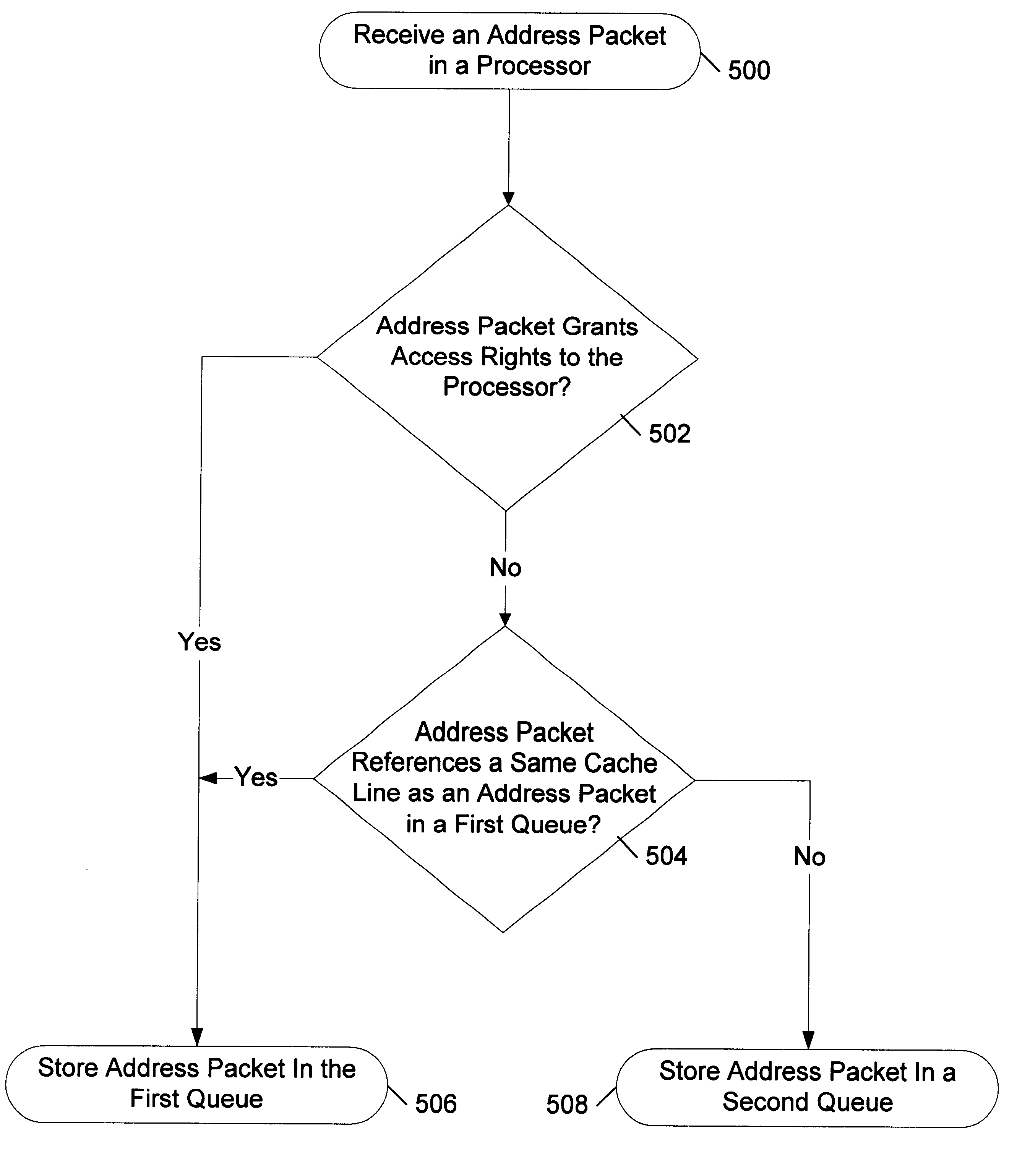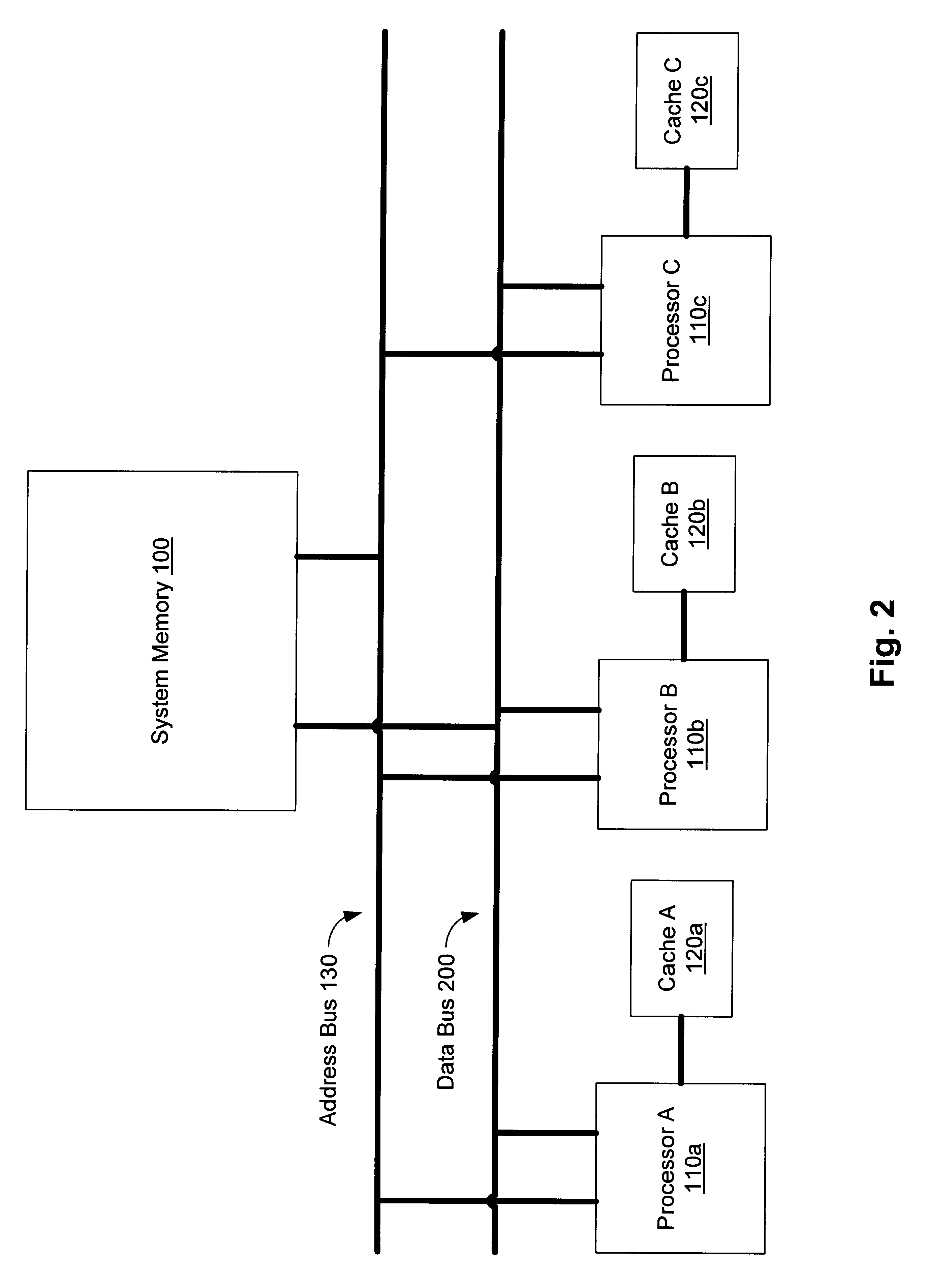Mechanism for reordering transactions in computer systems with snoop-based cache consistency protocols
a computer system and consistency protocol technology, applied in the field of computer systems, can solve problems such as performance drawbacks, delay the processing of data received by processors, and delay the transfer of data from one cache to another cach
- Summary
- Abstract
- Description
- Claims
- Application Information
AI Technical Summary
Problems solved by technology
Method used
Image
Examples
Embodiment Construction
Turning now to FIG. 1, a block diagram illustrating one embodiment of a computer system is shown. Other embodiments are possible and contemplated. In FIG. 1, system memory 100, processor A 110a, processor B 110b, processor C 110c, cache A 120a, cache B 120b, cache C 120c, address bus 130, data bus 140a, data bus 140b, data bus 140c, and data bus switch 150 are depicted. System memory 100 is coupled to address bus 130 and data bus switch 150. Processor A is coupled to address bus 130, data bus 140a, and cache A 120a. Processor B is coupled to address bus 130, data bus 140b, and cache B 120b. Processor C is coupled to address bus 130, data bus 140c, and cache C 120c.
In FIG. 1, processor A 110a, processor B 110b, and processor C 110c can be configured to access system memory 100 and store data retrieved from system memory 100 in cache A 120a, cache B 120b, and cache C 120c, respectively. As noted above, the term processor can be used to refer to an active device that uses a system memo...
PUM
 Login to View More
Login to View More Abstract
Description
Claims
Application Information
 Login to View More
Login to View More - R&D
- Intellectual Property
- Life Sciences
- Materials
- Tech Scout
- Unparalleled Data Quality
- Higher Quality Content
- 60% Fewer Hallucinations
Browse by: Latest US Patents, China's latest patents, Technical Efficacy Thesaurus, Application Domain, Technology Topic, Popular Technical Reports.
© 2025 PatSnap. All rights reserved.Legal|Privacy policy|Modern Slavery Act Transparency Statement|Sitemap|About US| Contact US: help@patsnap.com



